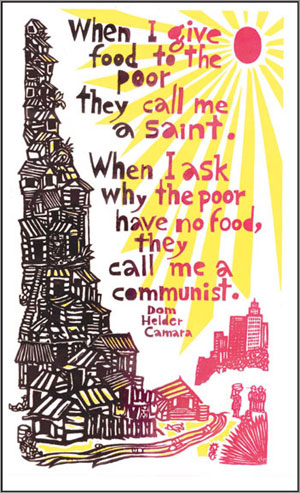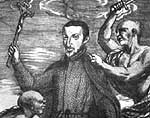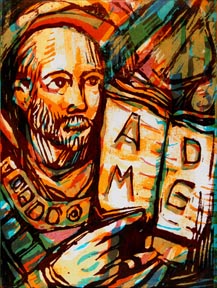 “Irreconcilable with the Catholic Faith”Call to Action holding 3-day dissidentfest in San Jose
“Irreconcilable with the Catholic Faith”Call to Action holding 3-day dissidentfest in San JoseCall to Action, the dissident Catholic group described by Cardinal Giovanni Battista Re as
“causing damage to the Church of Christ,” began a three-day regional conference this morning in San Jose. Call to Action dissents from Church teaching on, among other things, homosexuality, women’s ordination, priestly celibacy, and contraception. The
“10th Annual West Coast Regional Call to Action Conference,” with the theme
“Rebuild My Church – Responding Creatively to Injustice,” is being held at the Wyndham Hotel. It is scheduled to conclude on Sunday, April 27.
According to a program announcement, the conference will feature various dissidents from Church teaching, including several so-called “women priests.” Victoria Rue, Juanita Cordero, Kathleen Kunster and Jane Via – who claim to be “women priests” -- are scheduled to conduct a workshop entitled “Women Priests at the Grassroots.” Fr. Brian Joyce, pastor of Christ the King parish in Pleasant Hill (Oakland diocese), is another of several scheduled speakers.
His talk will cover “Concrete Examples for Rebuilding a Parish -- How the vision of Vatican II can be explored and implemented in today's parish using sound theory and concrete examples.” Fr. Joyce became notorious in 2002 when someone videotaped a “Clown Mass” he was celebrating at his parish. The video has since been posted on YouTube and can be viewed at www.youtube.com/watch?v=NsC4wRPybpA. Rob Grant, described in the program announcement as “a driving force in the Bay Area liturgical scene,” will lead a workshop on “Why the Church has a Problem with Progressives.” The program announcement describes the workshop this way: “Why on earth would an otherwise intelligent institution be so wary of concepts as seemingly benign as women priests? Inclusive language? Collaborative leadership? Knowing the paradigms, assumptions and fears from which a person or a group operates is the first step to conversation and true engagement.”
Listed as “keynotes” are Fr. John Dear, who, says the program announcement, is “a Jesuit priest, peace activist, lecturer, and writer of approximately twenty books on nonviolence. In the course of his civil disobedience against war, he has been arrested more than 75 times;”
retired Bishop Remi De Roo, who, as a result of his participation in Vatican II “came to see how creative and life-giving these internal ecclesial tensions could become and grew to welcome the healthy diversity that is innate to authentic catholicity;” and Leo Keegan, who “has been working in area of liturgical renewal for over 25 years as consultant for parish, diocesan and National Conferences specializing in initiation rites, liturgical arts and ministry formation.”
In March 1996, Bishop Fabian Bruskewitz excommunicated all Catholics in the Diocese of Lincoln, Nebraska, who were members of Call to Action (along with members or supporters of Catholics for a Free Choice, Planned Parenthood, the Hemlock Society, the Freemasons, and the Society of St. Pius X).
Call to Action’s Nebraska chapter appealed their excommunication to the Vatican. In December 2006, Cardinal Giovanni Battista Re, prefect of the Congregation for Bishops, wrote to Bishop Bruskewitz that the Vatican was upholding his decision. “The activities of ‘Call to Action’ in the course of these years are in contrast with the Catholic Faith due to views and positions held which are unacceptable from a doctrinal and disciplinary standpoint,” wrote Cardinal Re. “Thus to be a member of this Association or to support it, is irreconcilable with a coherent living of the Catholic Faith.”
 Fr. Paul McNellis, S.J.
Fr. Paul McNellis, S.J.
































